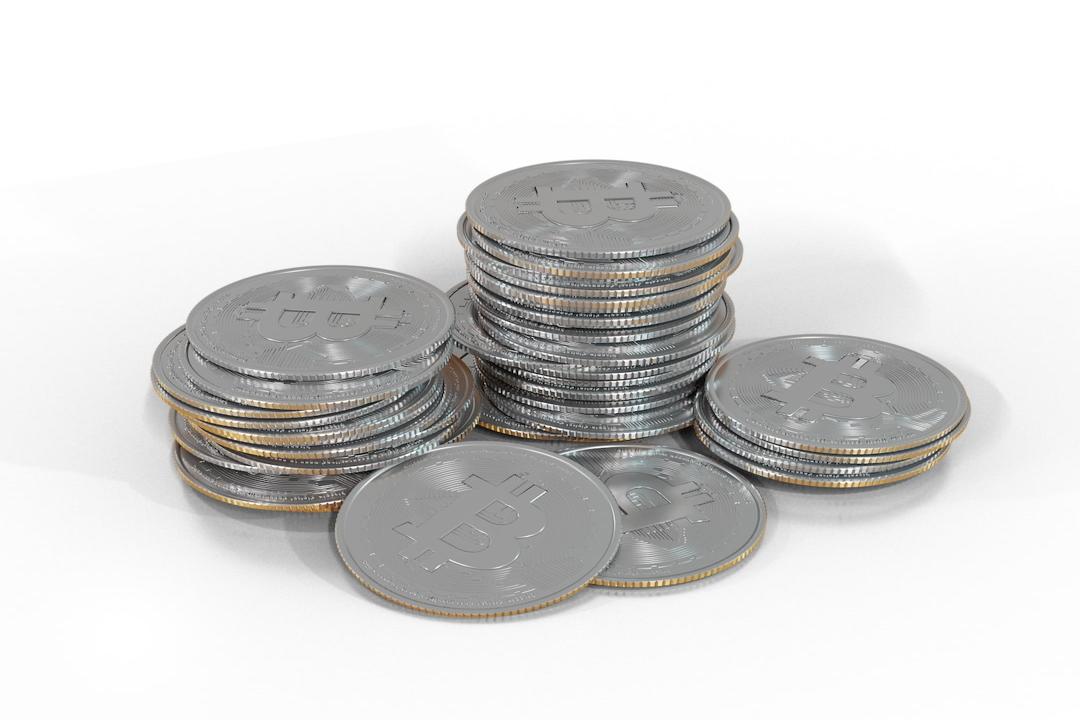Where is the Intersection of Art and Cryptocurrency?
Sometimes they are in competition with each other. Contemporary cryptocurrency has risen with its unparalleled efficiency and anonymity, undermining the traditional art market and losing its position as a store of value and even a “money laundering tool”.
(Background: Wall Street Journal: Chinese wealthy individuals have transferred $254 billion abroad in a year, with cryptocurrency and art becoming regulatory blind spots.)
Tax Evasion and Art
Wealthy individuals often discuss how to “reduce taxes”; regarding art, many jokingly refer to it as a good tool for “money laundering”. Last week, Jean Tsai, an art content creator on Facebook, posted a lament about the “Taipei Contemporary Art Fair announced its cancellation”. To many, this might seem like a trivial piece of news in the art world.
However, for anyone who has long tracked capital flow, this signifies that traditional tools, which have long served the wealthy as a means of storing value and hedging risks, are being eroded by more aggressive and efficient forces of cryptocurrency. The official reason for the cancellation of the Taipei Contemporary Art Fair is a “strategic adjustment” to respond to changes in the art market. While this is indeed true, it is merely a symptom rather than the root cause. The real question raised by the community is, why is the art market contracting?
Where has the “hot money” that should have flowed into galleries and auctions gone? The answer lies in the vast pool of capital with a market capitalization of up to $4 trillion in cryptocurrency, which traditional art markets find difficult to match. The logic of capital never runs on romance; it chooses the path of least resistance and highest efficiency.
How Traditional Artworks “Reduce Taxes”
Let us not discuss the genuine methods of using artworks for money laundering, but traditionally, wealthy individuals purchase art not only for aesthetic pursuits but also for strong demands related to tax reduction, appreciation, anonymity in transactions, and transferability.
Utilizing 1031 Exchange (U.S. Regulation): This is a tool used to “defer capital gains tax”, originally intended for real estate exchanges, but many wealthy Americans have recently employed it for art tax reduction.
Theoretically, if one sells a painting for profit, they should pay capital gains tax (up to 28% in the U.S.). However, if they immediately use that money to buy another painting of equal or greater value, they can legally defer the tax. It is akin to a DeFi nesting doll; one can keep exchanging layers and never pay taxes.
* The Trump administration limited this maneuver to real estate in the 2017 reforms, but those who played the game previously reaped substantial rewards. Now, with declining real estate transaction volumes in the U.S., there may be a stimulus tax reform for the wealthy.
Establishing Art Trusts or Foundations: Donating artworks to an art foundation one has created (e.g., “XX Family Cultural Trust”) allows for tax deductions at the time of donation, while the artworks still hang on the walls of one’s home, technically belonging to the foundation. This “separation of ownership and usage rights” is difficult for the IRS to scrutinize, so it is common for wealthy individuals to have high-value collectibles at home.
Storing in a “Freeport” (like Geneva, Switzerland): Storing artworks in a tax-free zone (Freeport) makes them merely “in transit” on paper, not yet entering the market. There, transactions can be conducted anonymously, waiting for market prices to fluctuate, or even using them as collateral for loans. Freeports act like dark web warehouses for the art world, where high-value artworks quietly lie as a safe haven, unseen and untouched by the IRS. Only characters like Robert Pattinson in the film “Tenet” could infiltrate.
Capital’s Ruthless Choice: Crypto
Now let’s make a direct comparison. When a high-net-worth individual decides to invest a sum in the tens of millions of dollars into the market, they face two choices.
Choice one: buy a contemporary artwork. They need to contact galleries, undergo eligibility verification, hire consultants for authenticity and valuation, and pay commissions to these professionals. Later, they must handle complex international shipping, customs, and tax issues. The entire process, from the initial thought to the artwork hanging on the wall, can take weeks or even months, with high friction costs and uncertainties throughout, akin to transporting gold using an outdated, trust-based courier system—slow and expensive.
Choice two: invest that sum in the cryptocurrency market. They only need to click a few times on a 3C device to complete a global transaction within minutes. This market operates 24/7, with liquidity spread worldwide. They can easily diversify their assets across different tokens, or even lend them through DeFi protocols to earn additional income.
The transparency of the blockchain system (all transactions traceable on-chain), low transaction costs, and immediacy completely overshadow the traditional art market. Some family offices allocate as much as 25% of their assets to digital assets, proving that the new generation of wealth managers is voting with their feet.
The essence of capital is profit-driven; reducing wear and tear equates to profit. When a market has high transaction costs, it will inevitably be replaced by a more efficient market, which is one reason why the art market is losing ground to cryptocurrency.
Generational Shift in Money Laundering Channels
Now, let us seriously discuss “money laundering”. For a long time, the art market, due to its subjective pricing, private transactions, and ease of cross-border transport, has been viewed as an ideal money laundering tool. The value of a painting can easily be overestimated or underestimated under “expert opinion”, providing a perfect excuse for the transfer of illegal funds. However, this seemingly perfect method has become increasingly fragile in the past two decades, as global anti-money laundering (AML) and counter-terrorism financing (CFT) regulations tighten.
Each physical transaction could leave customs records, financial trails, and insurance documents. In contrast, cryptocurrency offers stronger anonymity. Through blockchain mixers and other tools, the source of funds can be obscured layer by layer, making them difficult to trace. A sum of hundreds of millions can cross borders in seconds without declaring to any customs or financial institutions. This is extremely appealing for illegal funds seeking concealment.
Additionally, do you know who issues the high-market-cap meme coins? Who is behind them? A token that skyrocketed in value by tens of millions within a month is also used in DeFi swaps as a covert method of money laundering.
The Myth of Top-Tier Artworks
Of course, some may counter that looking at Christie’s and Sotheby’s auctions, those top-tier blue-chip artworks are still creating price ceilings. Works by Picasso and Monet remain prized heirlooms contested by the world’s wealthy. Does this not imply that the art market is still stable?
This perspective only tells half the story; a dramatic “asset differentiation” is occurring in capital inheritance. Those billions of dollars in “preservation capital” are not just buying assets but are also acquiring social status, cultural capital, and entrance tickets into elite circles. This type of capital is extremely risk-averse and seeks tangible assets and stability; the high volatility and “lack of reliable history” of cryptocurrency do not meet their needs. Thus, the market at the pinnacle of artworks remains solid.
However, a healthy market ecosystem cannot survive solely on a few art tycoons. The real support for the entire industry chain, sustaining countless galleries, curators, artists, and art agents, comes from the vast market of the middle and lower tiers. Art fairs are the most important transaction venues for the mid-tier market.
With “speculative capital” seeking excess returns being siphoned off by cryptocurrency, the mid-tier market is precisely what gets hollowed out. The cancellation of the Taipei Contemporary Art Fair precisely proves this point. The prosperity of the top-tier market rather highlights the depression of the mid-tier art market.
When Everything Can Be Tokenized
So, where is the future of art? The answer is not to oppose technology but to embrace it. This crisis is also an unprecedented opportunity: to “tokenize” real-world assets through blockchain.
The ownership of each artwork, every transaction record, and every appraisal report can be written into a token, permanently stored on the blockchain, and unalterable. This thoroughly resolves the biggest pain point in the art market: authenticity and provenance issues. The token representing ownership of the artwork can be divided into countless parts, allowing small investors to participate.
It can be traded freely on global digital asset exchanges 24/7, potentially resolving liquidity issues. It can even be pledged to DeFi protocols to borrow stablecoins, becoming a highly efficient income-generating asset.
The subsequent narrative is something that friends in the crypto circle are surely familiar with, and there’s no need for me to rehash it. Although NFTs have fallen from grace, it cannot be denied that tokenization of artworks can indeed address some survival issues in the traditional art world.


